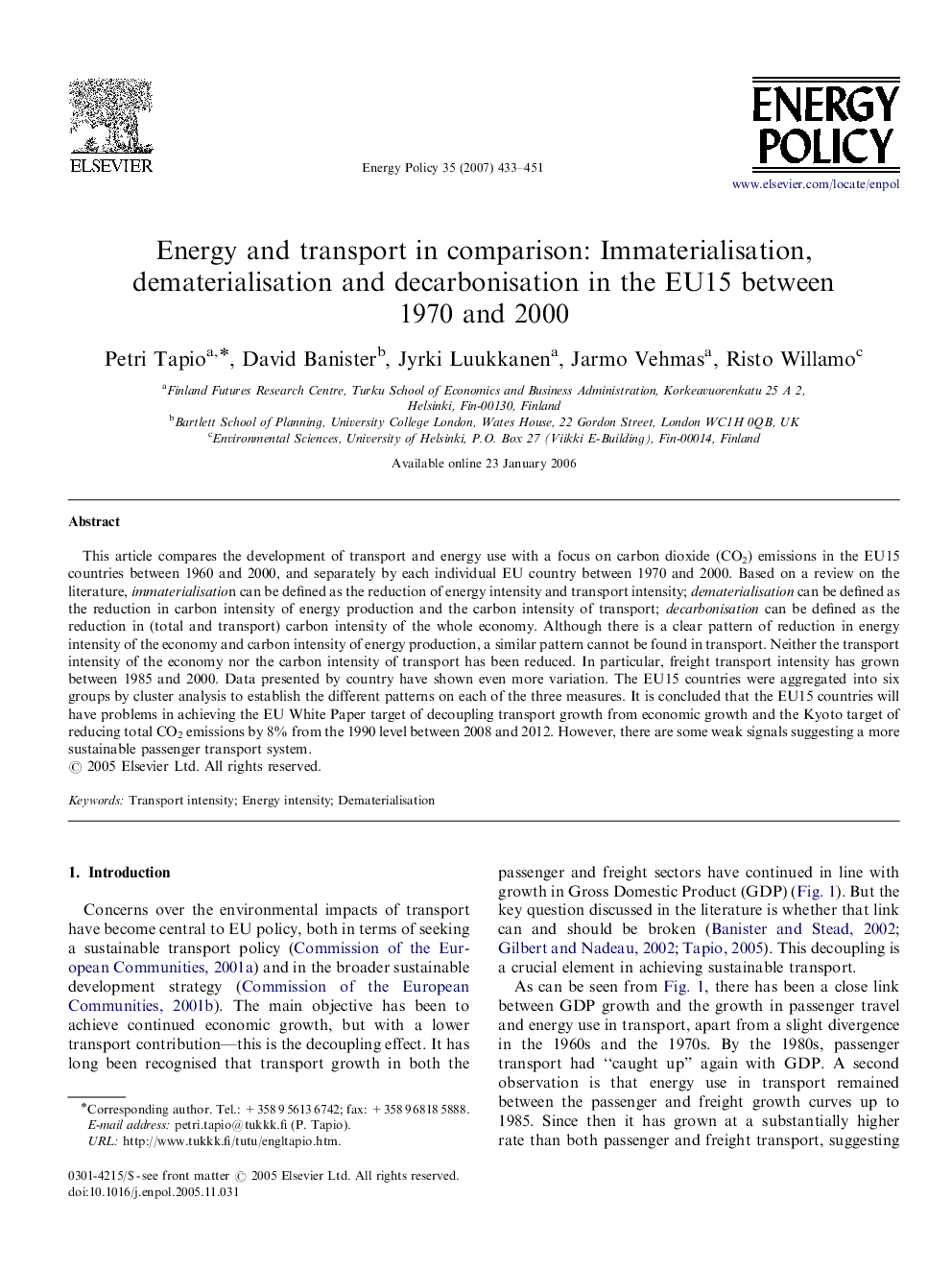| Article ID | Journal | Published Year | Pages | File Type |
|---|---|---|---|---|
| 994590 | Energy Policy | 2007 | 19 Pages |
This article compares the development of transport and energy use with a focus on carbon dioxide (CO2) emissions in the EU15 countries between 1960 and 2000, and separately by each individual EU country between 1970 and 2000. Based on a review on the literature, immaterialisation can be defined as the reduction of energy intensity and transport intensity; dematerialisation can be defined as the reduction in carbon intensity of energy production and the carbon intensity of transport; decarbonisation can be defined as the reduction in (total and transport) carbon intensity of the whole economy. Although there is a clear pattern of reduction in energy intensity of the economy and carbon intensity of energy production, a similar pattern cannot be found in transport. Neither the transport intensity of the economy nor the carbon intensity of transport has been reduced. In particular, freight transport intensity has grown between 1985 and 2000. Data presented by country have shown even more variation. The EU15 countries were aggregated into six groups by cluster analysis to establish the different patterns on each of the three measures. It is concluded that the EU15 countries will have problems in achieving the EU White Paper target of decoupling transport growth from economic growth and the Kyoto target of reducing total CO2 emissions by 8% from the 1990 level between 2008 and 2012. However, there are some weak signals suggesting a more sustainable passenger transport system.
